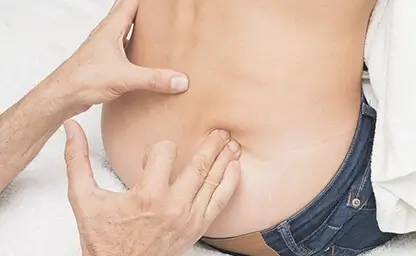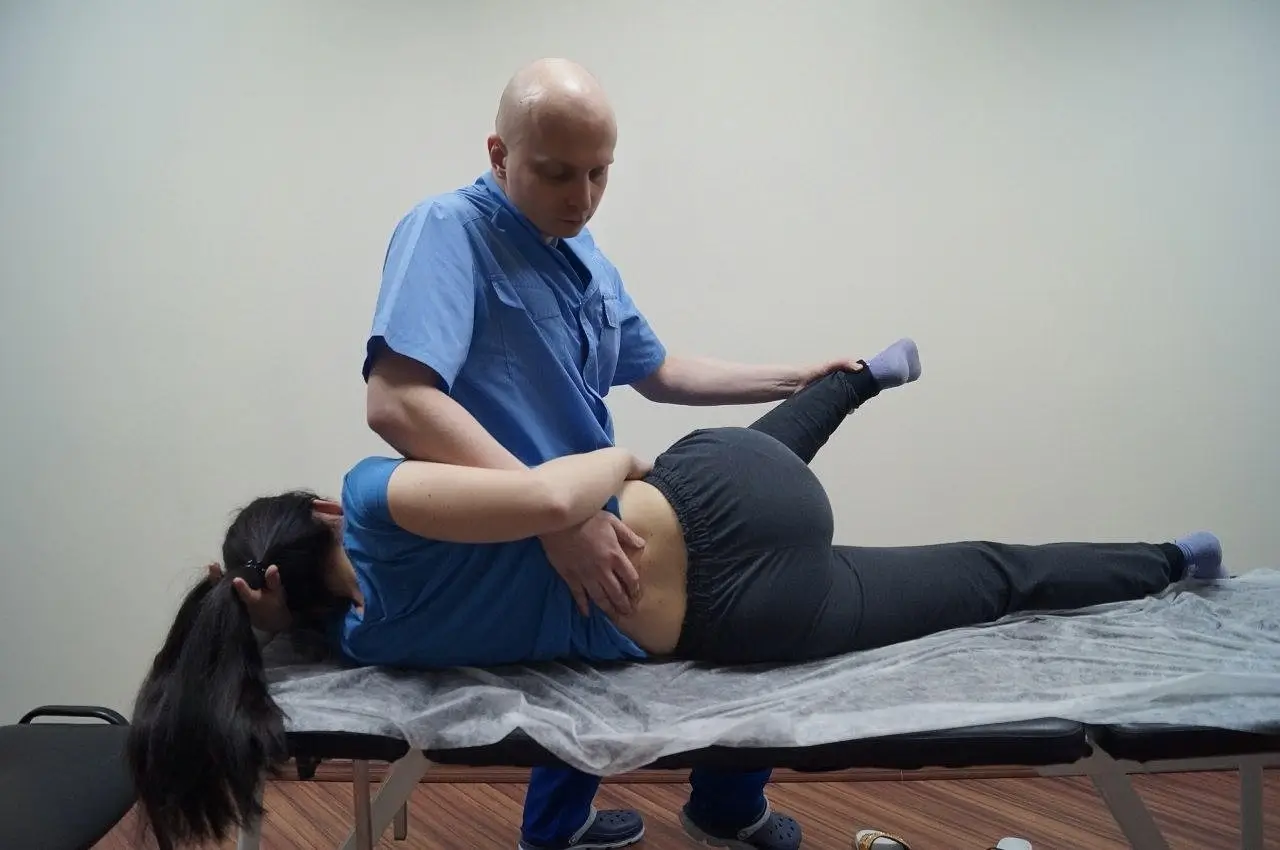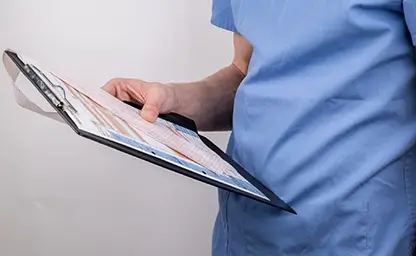

Feeling dizzy when turning head
A 21-year-old girl. Complaints of dizziness when turning her head, nausea, visual disturbances (dark spot on top right), headaches, rapid fatigue. These symptoms have been bothering her for the last 2-3 years. She underwent a comprehensive examination before visite me (MRI of the head and neck, various instrumental studies of head vessels, tests). Contrast X-ray of the vertebro-basilar area revealed almost complete discontinuity of blood flow and pinching of the vertebral artery on the right side, at the level of C1-C2.
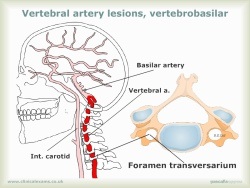 Objective examination: vertebral artery test (overextension and turning the head to the side) is sharply positive and causes the patient's usual symptoms (dizziness, nausea, dark spot plus horizontal nystagmus and panic fear). On palpation, severe soreness of neck muscles, especially suboccipital muscles, asymmetrical limitation of mobility of vertebral segments C0-C1, C1-C2. Immediately before treatment she had an rheoencephalography, the result: decrease of the blood flow in the vertebro-basilar basin on the left by 67% on the right by 28%.
Objective examination: vertebral artery test (overextension and turning the head to the side) is sharply positive and causes the patient's usual symptoms (dizziness, nausea, dark spot plus horizontal nystagmus and panic fear). On palpation, severe soreness of neck muscles, especially suboccipital muscles, asymmetrical limitation of mobility of vertebral segments C0-C1, C1-C2. Immediately before treatment she had an rheoencephalography, the result: decrease of the blood flow in the vertebro-basilar basin on the left by 67% on the right by 28%.
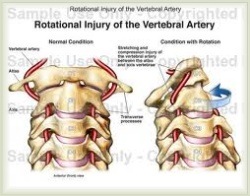 Diagnosis: pinched vertebral artery syndrome, presumably lower oblique muscle syndrome (which compresses the artery and blocks mobility between the first and second vertebrae), functional blocks of the C0-C1, C1-C2 segments.
Diagnosis: pinched vertebral artery syndrome, presumably lower oblique muscle syndrome (which compresses the artery and blocks mobility between the first and second vertebrae), functional blocks of the C0-C1, C1-C2 segments.
Treatment: myofascial release of the neck, especially the suboccipital area, positional release (Strain and counterstrain) and energy techniques of the muscles of the upper neck.
☛ What is the strain-counterstrain therapy
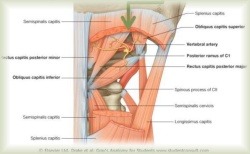 Result: after the first sessions her well-being improved. At the end of treatment (5 sessions): vertebral artery test was negative. There was repeated investigation result: blood flow on the left side reduced by 19% on the right side by 21% (before treatment 67-28%). Later on several sessions were conducted aimed at fixing the results and improving venous and lymphatic drainage (work with the thorax outlet, dysfunction of the first rib, diaphragm, lymphatic drainage techniques). Recommendations for maintaining health are given.
Result: after the first sessions her well-being improved. At the end of treatment (5 sessions): vertebral artery test was negative. There was repeated investigation result: blood flow on the left side reduced by 19% on the right side by 21% (before treatment 67-28%). Later on several sessions were conducted aimed at fixing the results and improving venous and lymphatic drainage (work with the thorax outlet, dysfunction of the first rib, diaphragm, lymphatic drainage techniques). Recommendations for maintaining health are given.
Pinched vertebral artery in neck symptoms. Conclusions.
The assumption of osteopathic treatment was based on the young age of the patient, the acquired nature of the problem, and the absence of a history of traumatic and inflammatory episodes. The second important step was to choose safe, functional, gentle treatment methods that did not go beyond the painless limit and did not provoke the symptomatology of a pinched artery in the neck.
The case is very striking, the results confirmed by the REG study, and all that was required was a gentle "hold" of the neck. Prior to that, the patient had taken hundreds of pills and dozens of IVs and almost to no avail. How many more of these patients are there?
P.S.
The mechanical problem has no chemical solution.

Grigori Tafi
Osteopath, sports medicine doctor
15 years of experience in osteopathy and manual therapy. Read more...
☛ Neck pain radiates to back of head.
☛ Hearing ringing in silence.
